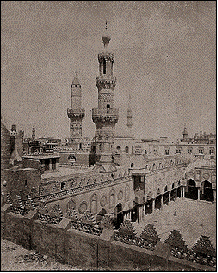
 Syria 10 Pound 1991 UNC
Syria 10 Pound 1991 UNCFront Design: Al-Azem Palace in Damascus and female dancer
Back Design: Ivory vessel and water plant
Al Azem Palace, Damascus was built in 1750 by As’ad Pasha al-Azem who was the Ottoman governor in Damascus. The structure is made of white limestone and black basalt. Image obtained from: Wikipedia, the free encyclopedia











































 Egypt 25 Piasters
Egypt 25 Piasters